Purchasing a car is one of the most significant investments you'll make, so maintaining it is not something you should ignore - doing so can get expensive. Performing routine, preventative maintenance ensures that your vehicle remains safe to drive, that it retains its resale value, and that the warranty remains valid.
What's so important about vehicle maintenance?
Maintenance service is like a wellness visit - it doesn't mean that something is wrong with your car and in need of repair, but a reputable service provider knows what to inspect to ensure you are not faced with hefty repair costs down the line. In some cases, there might be things you might not see or hear - or even worse - a safety hazard, which left unchecked would cost you more money to fix in the long run and shorten your car's life span.
For optimal performance and the safety of your vehicle, proper maintenance is essential. These days, you can make your car last to 200,000 miles and beyond by keeping up with maintenance needs for 10 to 15 years.
How often does your car need maintenance?
Make it easier to minimize your repair bills and save money by staying up to date with maintenance. It's best to refer to your owner's manual for your manufacturer's defined maintenance schedule, but with driving frequency and conditions back to normal, here is a good rule of thumb for the amount of maintenance and repair you should plan for:
- Maintenance Service: 2 times a year regardless of self-identifiable issues (i.e., check engine light)
- Unscheduled Repair: 1 time as year as your vehicle ages (post-manufacturer warranty)
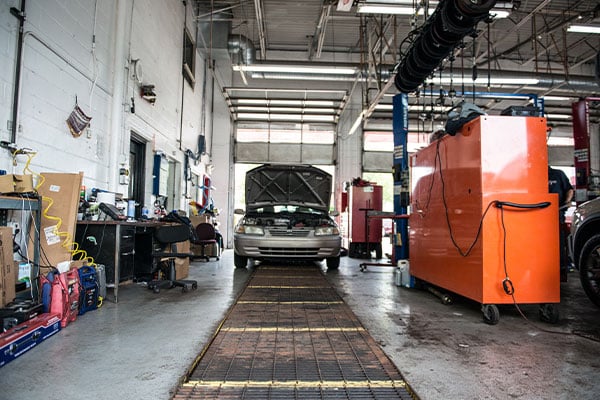
How driving conditions affect your maintenance schedule
When it comes to lifecycle maintenance, you need to consider how you drive your car. "Tune-ups" are all but gone as manufacturers and mechanics move away from strictly mileage-based schedules as a car's lifestyle.
Manufacturers define your car's maintenance schedules and prescribe different ones for "normal" and "severe" driving conditions. Your driving falls under the "severe" driving category if you:
- take short trips of less than 10 miles
- drive in heavy traffic with many stops and starts
- drive at high rates of speed (sustained speeds of more than 75 mph)
- tow heavy loads or drive off-road
- drive in dusty conditions
- drive in extremely cold or scorching climates (temperatures below freezing and above 95 degrees Fahrenheit)
All of these things will require more frequent trips to the shop to maintain your vehicle and keep it safe. There are also certain instances outside of "normal" driving conditions when you should have your mechanic inspect your car:
- Your car has been sitting for a long time. Cars are designed to run regularly, and just like the muscles in your body, certain aspects of a vehicle can deteriorate if you don't use them. Even if you think your car is in great shape, any car that has sat too long creates a different set of issues.
- You are going on a road trip. Your objective is to have an enjoyable trip, free of the hassles and delays that result from car trouble on the road. Some forethought can assure you of the safest, most trouble-free experience possible while you are on the road.
- You will be driving in new conditions. Extreme weather conditions pose their own set of issues and can be taxing on your car. For example, winter brings snow, ice, and sleet. As your tires struggle for traction, you have the additional challenge of keeping your windshield clear so you can see the road. Potholes can damage your suspension, and road salt can rot your body panels. Getting your car weather-ready is essential. Suffering a breakdown in extreme weather isn't just inconvenient; it can be dangerous.
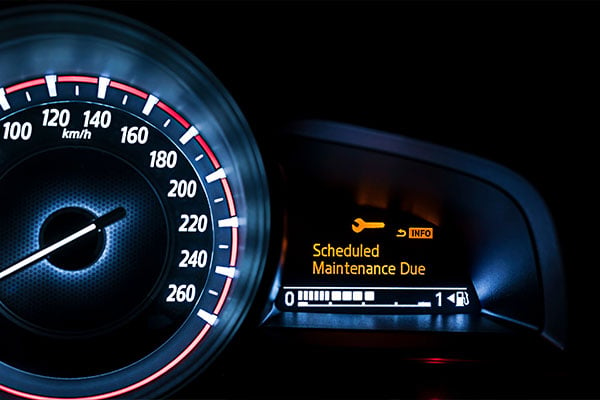
Common Maintenance Intervals for Your Vehicle
Service intervals may vary between auto manufacturers, so please consult your owner's manual for service information related to your specific vehicle. Your particular driving conditions should also be considered, but here is a general idea of what services you should expect to see for "normal" driving for 150,000 miles:
Every 10,000 Miles or Six Months
This service generally involves an oil and filter change, tire rotation, and a safety inspection. While changing the oil, your mechanic will perform visual checks of the brakes, belts, and hoses, inspecting for any fluid leaks, listening for any abnormal noises, and paying attention to any irregularities in the vehicle's operation.
Early Lifecycle: The First 50,000 Miles
10,000 miles - If you have your vehicle serviced at the dealership, have them also check and perform any unaddressed recalls for your make and model.
20,000 miles - It's not uncommon for your vehicle to need a brake pad replacement at this mileage. Some cars may need to have their tires replaced depending on their usage.
30,000 miles - You may start seeing some fluids replaced, such as the brake fluid, engine coolant, and transmission fluid. It can also include the replacement of spark plugs, air filters, and fuel filters.
40,000 miles - It's not uncommon for certain aspects of your vehicle, such as drive belts and hoses, motor mounts, and suspension bushings, to start showing signs of wear. Oil leaks may begin to appear as well. Check out RepairPal's Common Problems page for your vehicle so you can have some idea as to what the future may hold for you and your vehicle.
On some vehicles, you are nearing the end of your warranty period. You should pay close attention to the operation of your car and have any issues addressed while the warranty is still valid. If you have your service performed at a dealership, have them check and perform any open recalls on your vehicle.
50,000 miles - At this stage, your vehicle should be nearing the end of its warranty unless you have an extended warranty or purchased a used car. This may not apply to some vehicles' drivetrain and emissions warranties. It's a good idea to have your vehicle inspected and any problems addressed before the warranty is expired!
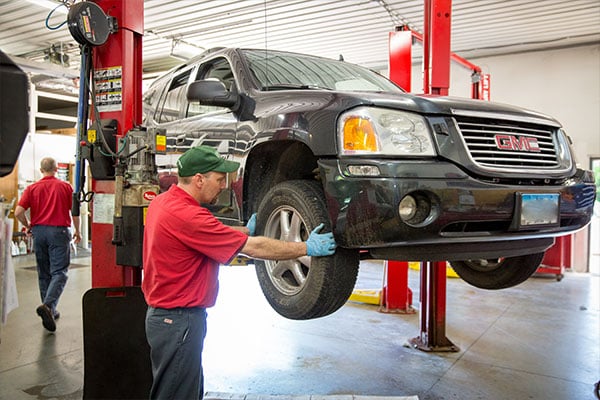
Mid Lifecycle: 60,000 to 100,000 Miles
60,000 miles - You may start seeing the replacement of additional fluids like the automatic transmission fluid (and filter, if equipped), engine coolant, and differential fluid. Additionally, drivers can expect the following:
- Some vehicles will require replacement of the timing belt or a valve adjustment
- Some vehicles will require replacement of the spark plugs
- A more comprehensive checklist of inspections may also be included. Each shop and vehicle manufacturer may vary the actions performed, so be sure to consult the maintenance schedule in your owner's manual.
Some additional repairs that may be necessary include:
- Brake pad replacement
- Tire replacement
- Drive belt replacement
70,000 miles - It's not uncommon for certain aspects of your vehicle, such as drive belts and hoses, motor mounts, and suspension bushings, to start showing signs of wear. Oil leaks may begin to appear as well.
80,000 miles - This service generally involves an oil and filter change, tire rotation, and a safety inspection. While changing the oil, your mechanic will perform visual checks of the brakes, belts, and hoses, inspecting for any fluid leaks, listening for any abnormal noises, and paying attention to any irregularities in the vehicle's operation.
90,000 miles - You may start seeing the replacement of additional fluids like the automatic transmission fluid (and filter, if equipped), engine coolant, and differential fluid. Some additional repairs that may be necessary include:
- Brake pad replacement
- Tire replacement
- Drive belt replacement
- Shock absorber/strut replacement
- Engine coolant hose replacement
100,000 miles - It's not uncommon for certain aspects of your vehicle, such as drive belts and hoses, motor mounts, and suspension bushings, to start showing signs of wear. Oil leaks may begin to appear as well. Your next service may be quite expensive, so we recommend not putting off repairs until then if you wish to avoid a very large repair bill.
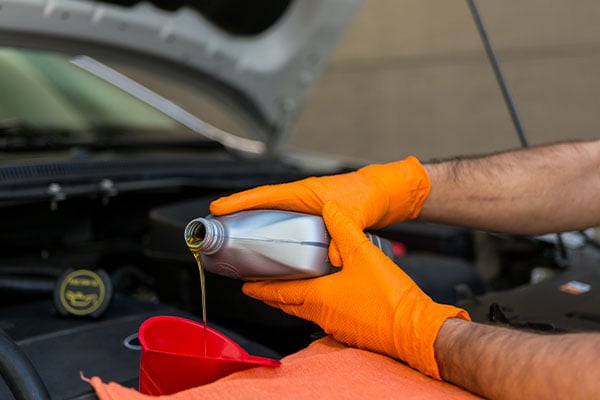
Later Lifecycle: 100,000 to 150,000 Miles and Beyond
110,000 miles - If your vehicle was supposed to have the timing belt replaced and it wasn't, then it is likely running on borrowed time from an expensive fate. Please make sure you didn't miss this service!
Depending on your vehicle, after 100,000 miles is when you start seeing the benefits or pitfalls of proper maintenance. A properly maintained vehicle may need brakes or minor repairs, whereas a car that has been neglected can be confronted with repairs totaling in the thousands of dollars.
Your next service may be quite expensive, so it's a good idea to have any recommended work performed to prevent a huge repair bill next time in the shop.
120,000 miles - This service generally involves the replacement of fluids like the automatic transmission fluid (and filter, if equipped), engine coolant, and differential fluid. Some additional repairs that may be necessary include:
- Brake pad replacement
- Tire replacement
- Drive belt replacement
- Shock absorber/strut replacement
- Engine coolant hose replacement
- Engine mount replacement
- Steering and/or suspension component replacement
130,000 miles - You have already started seeing the benefits or pitfalls of proper maintenance at this mileage. A vehicle adequately maintained may need brakes or minor repairs, whereas a car that has been neglected can be confronted with repairs totaling in the thousands of dollars.
140,000 miles - Similar to other 10,000 mile check-ins, this service generally involves an oil and filter change, tire rotation, and a safety inspection. While changing the oil, your mechanic will perform visual checks of the brakes, belts, and hoses, inspecting for any fluid leaks, listening for any abnormal noises, and paying attention to any irregularities in the vehicle's operation.
150,000 miles - You may see some fluids replaced, such as the brake fluid, engine coolant, and transmission fluid. It can also include the replacement of spark plugs, air filters, and fuel filters.
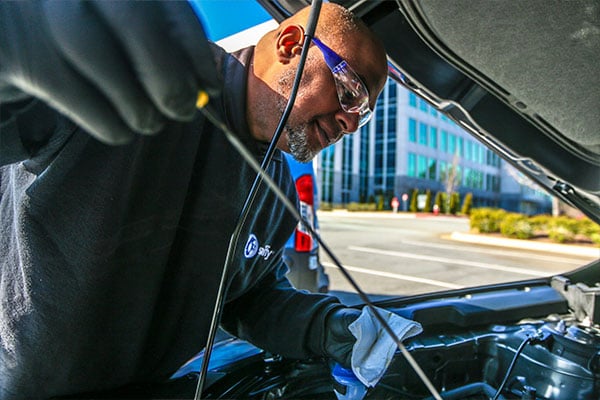
It's more convenient than ever to get your car service from services like Spiffy who meet you where you are at for maintenance and light repair. Spiffy can also help your car look nice with car wash and detail services that help extend the life of your paint. If they find something significant that needs repair, they will refer you to a high-quality shop in the RepairPal Certified Network!





